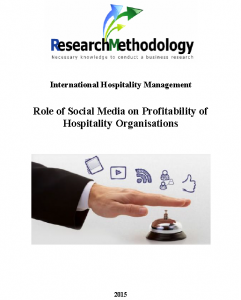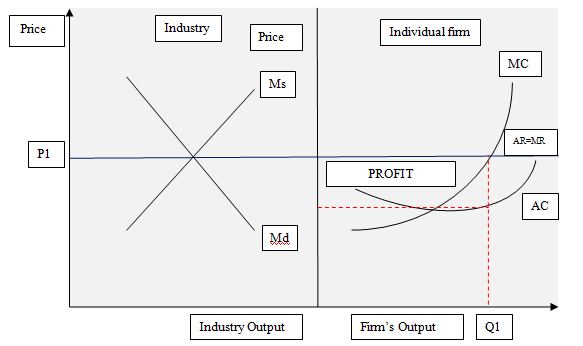
Competition is becoming intensive for virtually all types of products and services and due to this tendency responsibilities of marketing department of companies have increased. Marketing mix can be specified as an effective framework that can be used to increase the overall value of products and services to customers. This article contains analysis of each element of marketing mix by using a variety of secondary data sources. The notion of marketing mix refers to a balance of marketing methods needed to sell products and services. Marketing mix consists of four core elements – product, price, place and promotion that are jointly known as ‘four Ps’. Extended marketing mix contains additional ‘three Ps’ consisting of people, process and physical evidence. Product element of marketing mix Anything that has a potential to satisfy specific customer needs can be specified as product. In modern marketplace learning about customer needs and wants through marketing research precedes development of products and services. Product variables include but not limited to its design, durability, technical features and capabilities, ease of maintenance and others. Businesses use branding in order to differentiate their products and services from other products and services offered in the market. For example, while there is a wide range of soft drinks offered in the market, Coca-Cola drink in particular has a large market share, partially due to successful branding strategy of the company. Importantly, benefits of successful branding go beyond any particular single product to assist the sales of other products offered by the company as well. Positive image of Apple brand assists sales of MacBook desktop computers, as well as, other products offered by the company such as IPhone and IPad. Benefits of products and services have tremendous on the levels of revenues and these benefits can be divided into three categories:…

This article represents a critical analysis of marketing communications materials used by Coca-Cola Company, a global beverage manufacturer and retailer based in Georgia, United States. The Coca Cola Company is a global manufacturer, marketers and seller of non-alcoholic beverages and syrups based in Atlanta, US. Range of brands owned by the company includes Coca-Cola, Diet Coke, Coca Cola Zero, Sprite, Fanta, Powerade, Minute Maid, Aquarius, Dasani, Schweppers and others. This article focuses on marketing communication materials associated with one of its core products, the Coca-Cola drink. Established in 1886, the company currently sells in more than 200 countries and beverage trademarks owned and licensed by the company account for 1.9 billion of approximately 57 billion beverage servings around the globe on a daily basis (Annual Report, 2013). The article starts with description and analysis of various types of media employed in order to promote the Coca-Cola, followed by the identification of objectives of Coca-Cola campaign. Then, extensive analysis of images and words used in Coca-Cola campaign is undertaking in order to ensure a greater scope for the current research. Moreover, attempts are made to analyse the appeal of Coca-Cola marketing messages, as well as, assessments are provided at what extent Coca-Cola marketing campaigns were achieving their objectives. Types of Media used to Promote Coca-Cola Media can be defined as a “facilitating institution who suggest appropriate message within the operative constraints of space” (Tyagi and Kumar, 2004, p.341) and is considered to be one of the most effective advertisement methods among marketing practitioners. Spurgeon (2008) divides media into two categories: published media and visual/aural media. Published media includes newspapers, magazines, trade and professional press, as well as internet. Visual and aural media, on the other hand, include television, radio, cinema, posters, billboards, and direct mailing. Various types of media are used…

The 21st century has been dubbed as an information age (Bell and Blanchfower, 2011) and internet in general, and social media in particular are playing an instrumental role in facilitating the spread of information throughout the globe at a rapid speed. Moreover, increasing levels of interactivity of social media platforms is further contributing to the level of their popularity, and nowadays social media has been effectively adopted by many businesses along a wide range of industries as a highly effective marketing and communication platform. At the same time, the level of use of social media varies between various industries, as well as, individual organisations within a particular industry, and while some organisations are beginning to realise substantial opportunities offered by social media, others are already utilising these opportunities to a full extent. This essay contains a critical evaluation of the role of social media on the popularity of a tourism destination. The essay starts with discussions about increasing influence of social media on consumer behaviour. This is followed by critical analyses of potential benefits of social media to hospitality organisations. Moreover, issues related to negative impacts of social media on the performance of hospitality organisations are also addressed in this essay. Essay is concluded by providing a set of recommendations to strategic and marketing managers of hospitality organisations in terms of benefiting from opportunities offered by social media to a maximum extent. Introduction 1 Increasing influence of social media on consumer behaviour in service sector 2 Potential benefits of social media to hospitality organisations 5 Negative impacts of social media on the performance of hospitality organisations 8 Recommendations for managers of hospitality organisations in relation to social media 10 Conclusions 14 References 16 Cathay Pacific DoubleTree Club Hotel Facebook Hampton Hotels Twitter How do I receive the report? Once payment…

Pure monopoly refers to a situation where there is only one firm offering a specific type of product or service. However, instances of pure monopoly are very rare in modern markets due to the intensified level of globalisation of economies and anti-monopoly rules and regulations introduced by governments. Working monopoly refers to a situation where any company possesses more than one fourth of the market share. Certain firms are able to attain monopoly in the market due to possession of scare resources, special government grants under certain circumstances, possession of patents for innovations or as a result of merger of two or more large companies in the industry. Achievement of profit maximisation objective is easier by monopolistic firms compared to other market structure due to the lack of competition. In simple terms, consumers have no choice but to purchase products offered by monopolist firm due to the lack or even absence of alternative products in the market. Price discrimination can be divided into three categories: first degree, second degree, and third degree. First degree price discrimination is associated with inelastic markets where a certain business entity is in the position of pricing its products at different levels, at the same time selling to the whole market without competition, which is rare in practical levels. As it is illustrated in figure below, second degree price discrimination relates to elastic market where businesses offer different amounts of their products for different prices. Lastly, the third degree of price discrimination marks the case of combined market where different prices are set for different groups of consumers. Businesses can engage in price discrimination only if they possess certain degree of monopoly. In other words, monopolistic businesses use price discrimination strategies in order to increase the levels of abnormal profits. The degree of price discrimination…

Perfect competition can be defined as a situation “in an industry when that industry is made up of many small firms producing homogeneous products, when there is no impediment to the entry or exit of firms, and when full information is available” (Baumon and Blinder, 2011, p.200). Market structure can be specified as perfect competition if the following conditions or assumptions are met: Firstly, there are many supplies in the market and each supplier has an insignificant market share. In other words, no single supplier is in the position of impacting price through manipulations with its supply of products. Secondly, there are no major differences between products offered by suppliers and these products can be consumed as substitution for each-other. To be more specific, even when there are certain differences between products in the same industry, they are identical in consumer perception. Thirdly, consumers are fully aware about costs charged by all suppliers. This situation has implications in a way that a certain supplier decides to increase its prices; the levels of its revenues will decline because of consumers switching to other suppliers. Fourthly, the level of access to various resources is equal for all suppliers. Moreover, all participants in the industry can benefit from breakthroughs and other positive changes in the industry in an equal manner. Fifthly, industry entry and exit barriers for suppliers are insignificant. In other words, new suppliers can join competition at any time with implications on the levels of profits of existing suppliers. Sixthly, there is no divergence between private costs and social costs, as well as, benefits due to the absence of externality in manufacturing and consumption. Six main assumptions associated with perfect competition market structure discussed above have certain implications on profit maximisation attempts of businesses. Outcome of interaction between supply and demand…

Burke (2012) links the impacts of the global economic crisis of 2008-2010 with spending cuts on education system by the UK government. Chalabi and Arnett (2013), on the other hand, make an interesting observation related to the issue. Specifically, according to Chalabi and Arnett (2013), the levels of GDP in the UK decreased by 2 per cent between 2008 and 2010, whereas the levels of public expenditure on education have increased by 8 per cent during the same period. A large-scale survey conducted by Education Institution (2009) has attempted to assess impacts of the global economic crisis on education in 48 countries, including the UK. Infrastructure, human resources (HR), and other needs of the UK education system have been found as a result of the survey. Infrastructure needs of UK education system, according to Education Institution (2009) relates to necessity to rebuilt primary schools. Other needs are found to relate to funding for high quality continuing professional development of teachers and challenges associated with reforming curriculum and qualification system. However, it is important to note that Education Institution (2009) findings only relate to education in public sector, and the level of relevance of data to private sector educational institutions are yet to be established. Burke (2012) considers dramatic reduction of numbers of graduate employment schemes offered by multinational companies in 2009 as the direct impact of the global economic crisis. Although, this argument appears to be convincing, Burke (2012) fails to back-up the claim through referring to relevant statistical data. Vaitilingam (2010) points to the risk of lifetime earning loss for a generation of graduates that join full-time workforce during or immediate aftermath of recession. According to Vaitilingam (2010), this situation may occur due to rapid increase in the supply of graduates compared to jobs caused by cuts on graduate…

National economy of the UK entered the period of recession on the fourth quarter of 2008. Review of literature has found consensus amongst authors about significant negative impacts of the global economic crisis of 2008-2010 on UK economy. The lowest level of recession in UK occurred in June 2009, when the decline of economy has amounted to 5.5 per cent compared to its peak in Quarter 1, 2008 (Vaitilingam, 2010). According to Bell and Blanchflower (2011), the crisis has resulted in substantial cuts on government spending, reduction on the levels of household spending, and has contributed to the emergence of uncertain and volatile investment climate. Impacts of the crisis on jobs in the UK have been analysed by Vaitilingam (2010) in a detailed manner. To be more specific, Vaitilingam (2010) assesses job-related impacts of the global economic crisis of 2008-2010 to include increase on the levels of unemployment and regional disparities in Britain’s economic geography. Additionally, Vaitilingam (2010) specifies low-educated and low-skilled employees, as well as, older workers to be most disadvantaged in terms of being negatively impacted from the crisis. Sobel (2012) draws attention to personal and emotional implications of the crisis to daily lives of people in the UK and elsewhere. According to Sobel (2012) due attention is not paid to this specific aspect of the crisis and the authors stresses the necessity for additional researches in this area. References Bell, D.N. & Blanchflower, D.G. (2011) “The crisis, policy reactions and attitudes to globalisation and jobs” WTO Sobel, A.C. (2012) “Birth of Hegemony: Crisis, Financial Revolution, and Emerging Global Networks” University of Chicago Press Vaitilingam, R. (2010) “Recession Britain: Findings from economic and social research” Economic & Research Council

There is a large volume of published studies analysing major reasons of the global economic crisis of 2008-2010. Excessive risk taking by financial institutions in the US combined with inefficiencies with US housing regulations is shown as primary causes of global recession by Roberts (2009) and Heng (2010). Heng (2010) offers detailed account of the issue and effectively demonstrates that US-based financial institutions have encouraged individuals with no adequate credit history to own homes and rapid decline of house prices, phenomenon known as ‘housing bubble’ has given start to a severe global financial and economic crisis. A study conducted by Sobel (2012) confirms excessive risk taking and inefficiencies with housing regulations as reasons behind the economic crisis and also discussed additional factors not mentioned by many other authors. Specifically, according to Sobel (2012), inadequacies in formulating interest rate policies, as well as, policies to suppress inflation in the US have also played major role in creation of environment that led to the global economic crisis of 2008-2010. Globalisation is perceived by Tan (2010) as one of the major enabling factors of the global economic crisis of 2008-2010. The topic of globalisation is addressed by Samson and Daft (2012) in great details. Specifically, Samson and Daft (2012) divide globalisation into four stages and cultural sensitivity and managerial assumptions in each stage in the following manner: 1. Domestic 2. International 3. Multinational 4. Global Strategic orientation Domestically oriented Export-oriented, multi-domestic Multinational Global Stage of development Initial foreign involvement Competitive positioning Exposition of international operations Global Cultural sensitivity Of little importance Very important Somew hat important Critically important Manager assumptions ‘one best way’ ‘many good ways’ ‘the least-cost way’ ‘many good ways’ Four stages of globalisation Source: Samson and Daft (2012) However, while linking financial crisis and globalisation, Tan (2010) fails to…

Due to individual differences on the basis of cultural background, learning styles, personality etc. emergence of conflicts amongst employees in various levels is inevitable. Moreover, managerial expectations, communication breakdown and accountability issues can be specified as additional sources of conflict. Stereotyping can be mentioned as another factor that can cause conflicts in workplaces. Interestingly, the same elements that are perceived to be success factors such as team-working and communication can be sources of conflict due to reasons specified above. Constructive debates and conflicts may benefit organisation to a certain extent. To be more specific, conflicts may result in clarifications of certain issues, contribute to more effective decision-making and improve certain organisational processes. Nevertheless, managers need to ensure that occasional conflicts in organisation are limited within the boundary of work-related issues and employees do not conflict with each-other on personal grounds. Negative outcomes of conflicts may include stress, decreased employee performance, game of politics in organisation etc. Range of measures to be initiated by managers that can reduce the numbers and scope of unnecessary conflicts include fully clarifying roles and responsibilities of each individual employee, making management expectations clear, eliminating communication barriers with their subordinates and improving the overall organisational culture.
By John Dudovskiy
Category: Consumer Behaviour

The impact of time management in individual and team performance is great. Time is one of the most valuable resources of individuals and organisations and this resource needs to be dealt with accordingly. Penalties for neglecting the importance of time management for organisations include higher costs of operations and missed opportunities. Effective time management strategies for individuals include scheduling meetings and tasks in an organiser, compiling to-do lists, dealing with interruptions, eliminating distractions and others (Mathews et al., 2011, online). Time management strategies in organisational level, on the other hand, include developing Gant-Charts for the completion of important projects, imposing deadlines for each tasks, and organising virtual conferences that do not require physical presence of employees whenever possible. Moreover, some businesses have adopted an unconventional approach towards employee time management with positive effects on the bottom line. For example, one of the most famous internet companies of the present day – Google allows its employees to spend one fifth of their paid time on side projects and this strategy is often credited for the development of a range of successful Google services such as GMail and AdSense (Tate, 2013, online). References Mathews, J., Debolt, D. & Percival, D. (2011) “10 Time Management Tips that Work” Enterpreneur, Available at: http://www.entrepreneur.com/article/219553 Tate, R. (2013) “Google Couldn’t Kill 20 Percent Time Even if It Wanted To” Wired, Available at: http://www.wired.com/business/2013/08/20-percent-time-will-never-die/
